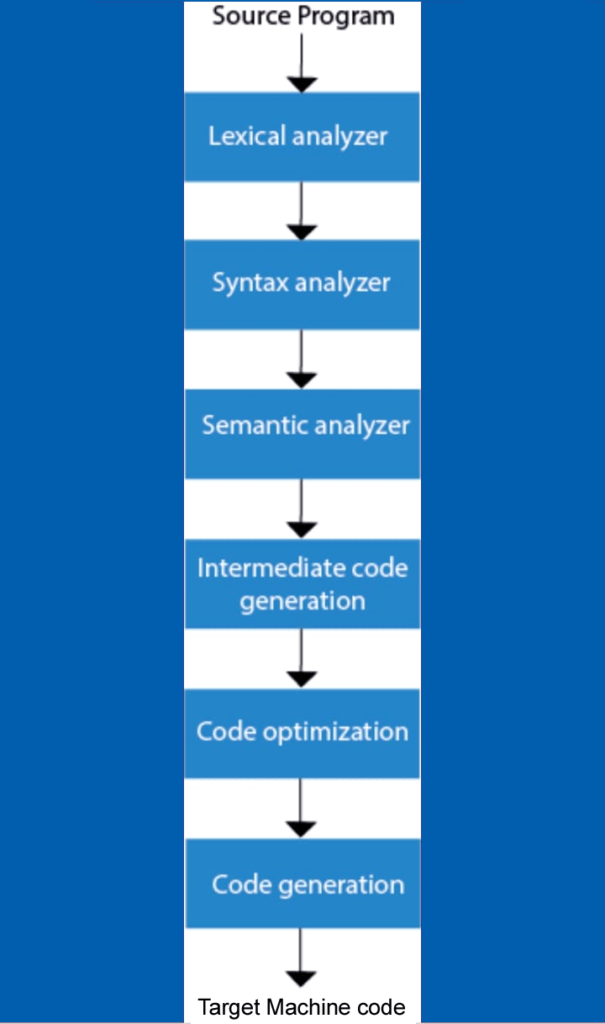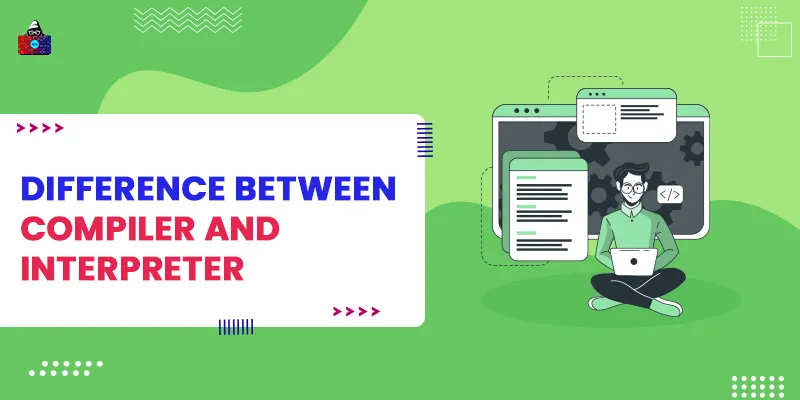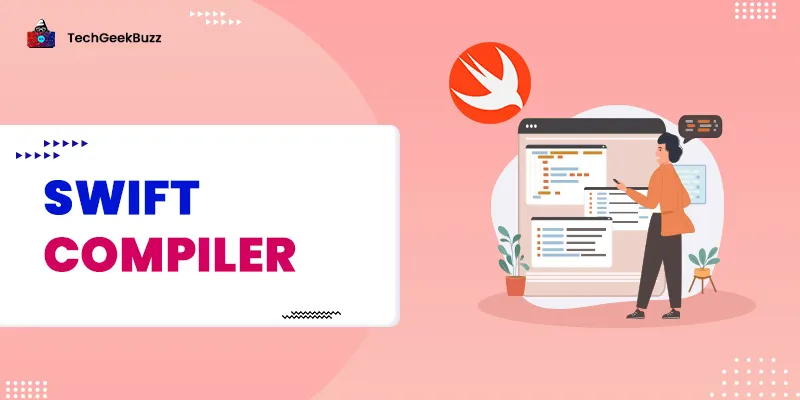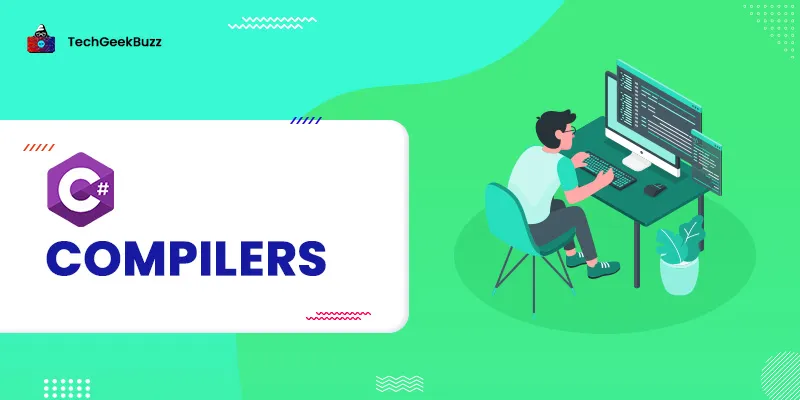Here in this post, we have explained the difference between compiler and interpreter in detail.
These days, developers only use high-level programming languages to create amazing software, web applications, and operating systems. These high-level languages are easy to learn, and even a non-developer can easily read the code and understand what that code is supposed to do. However, the computer on which we run our program or code does not understand high-level programming languages. Computers can only read binary or machine data presented in the form of 0's and 1's. Thus, to interpret the code written in a high-level language, computers require translators. Compiler and interpreter are the two most popular computer translator programs that convert high-level code to machine code and execute it. In this article, we will discuss compilers and interpreters and how they are different.
Difference Between Compiler and Interpreter
C++, Python, Java, and JavaScript are high-level programming languages. These languages are more human-friendly and readable and use English as a core language for syntax. Nonetheless, computers do not care whether the code is close to English or any other language, it only understands 0 and 1, and that’s why we need a translator. Translators are computer programs that convert the code of a high-level language into its low or machine-level code equivalent so that the computer can understand the instructions and execute the program. Here in this article, we will compare two famous translators, interpreters, and compilers. Let's start with a brief introduction to the compiler and interpreter.
What is a Compiler?
Many programming languages support a compiler as a translator tool to convert its high-level language code to machine code. A compiler is a computer program that can convert any language to another language, and generally, it is used to convert the high-level language code to low-level machine code so that the targeted computer or OS can execute the program. The compiler reads the source code and compiles it at once. While compiling, if the compiler finds any error, it would not execute even a single line of the code. There are many types of compilers. The two most popular ones are:
- Cross Compiler
- Source to Source compiler
A cross compiler is used to convert the code of one platform/CPU/operating system to another. For example, a compiler that runs on a PC and generates a source code for Android or any other platform is a cross compiler. The source to source compiler is used to convert the code from one language to another for the same platform. It is also known as a transcompiler or transpiler. This type of compiler is generally used by programming languages (like C, C++, and Java) to convert and execute high-level language code.
Working of a Compiler
The complete working of the compiler is divided into several steps, which are also known as compilation phases. These are:
1st Phase: Lexical Analysis
2nd Phase: Syntax Analysis
3rd Phase: Semantic Analysis
4th Phase: Intermediate Code Generation
5th Phase: Optimization
6th Phase: Target Code Generation
 In the
Lexical Analysis
phase, the compiler scans the code from left to right and top to bottom. It also generates and groups the tokens. During
Syntax Analysis
, the compiler generates an
Abstract Syntax Tree (AST)
using tokens generated in the first phase. Here, the compiler also checks and verifies the structure and grammatical syntax of the source code. In this phase, if the compiler finds any error in the source code, it raises a compilation error. After
Syntax Analysis
, the compiler performs
Semantic Analysis.
In this compilation phase, the compiler uses AST generated during the
Syntax Analysis
phase and checks the semantic errors of the program. In the 4th Phase of compilation, the compiler performs
Intermediate Code Generation.
Here the compiler generates an intermediate code that is closer to the machine code and platform-independent. This intermediate code is converted to the targeted machine code in the 5th and 6th phases of the compilation process. In the
Code Optimization
phase, the compiler optimizes
Intermediate Code
in such a way that it only consumes fewer resources with better efficiency. The last phase of compilation is
Target Code Generation,
where the compiler converts the intermediate optimized code to targeted machine language code so that the computer (or CPU) can execute the program.
In the
Lexical Analysis
phase, the compiler scans the code from left to right and top to bottom. It also generates and groups the tokens. During
Syntax Analysis
, the compiler generates an
Abstract Syntax Tree (AST)
using tokens generated in the first phase. Here, the compiler also checks and verifies the structure and grammatical syntax of the source code. In this phase, if the compiler finds any error in the source code, it raises a compilation error. After
Syntax Analysis
, the compiler performs
Semantic Analysis.
In this compilation phase, the compiler uses AST generated during the
Syntax Analysis
phase and checks the semantic errors of the program. In the 4th Phase of compilation, the compiler performs
Intermediate Code Generation.
Here the compiler generates an intermediate code that is closer to the machine code and platform-independent. This intermediate code is converted to the targeted machine code in the 5th and 6th phases of the compilation process. In the
Code Optimization
phase, the compiler optimizes
Intermediate Code
in such a way that it only consumes fewer resources with better efficiency. The last phase of compilation is
Target Code Generation,
where the compiler converts the intermediate optimized code to targeted machine language code so that the computer (or CPU) can execute the program.
Advantages of a Compiler
- The compiler translates the complete source code at once, which makes the code execution fast.
- It converts the source code program to the targeted computer-executable file, which is always ready to run.
- The compiler also works on code optimization that makes the complete program faster and memory-efficient.
Disadvantages of Compiler
- Even for a single change in the program, the complete program needs recompilation.
- The compiler generally compiles the source code to the targeted platform, which can not be run on another platform.
What is an Interpreter?
An interpreter is also a computer translator program that converts high-level program code to machine code and executes it line by line simultaneously. The approach of the interpreter code execution process is very similar to a human reading a sentence from a book. The interpreter reads the program's source code line by line and executes each line immediately. If there is an error in the program, the source code above that error line statement will still execute.
Working of an Interpreter
The interpreter reads the source code line by line from top to bottom, converts the code to intermediate code representation, and immediately executes it. The interpreter also compiles the program, stores it as a machine-independent code, and executes it.

Advantages of an Interpreter
- It's very easy to find errors in using interpreters.
- The interpreter executes the source code line as soon as the code is parsed.
Disadvantages of Interpreter
- As the interpreter executes each line after translation, this makes the complete execution of the program slower because the processor has to wait for the translation after each execution.
- The interpreter does not create an executable file for the targeted machine.
- It does not optimize the code.
Compiler vs Interpreter: A Head-to-Head Comparison
| Compiler | Interpreter |
|
Object Code |
|
| It converts the source code into an object code file and saves it. | It does not save the object code file. |
|
Performance |
|
| The compiler runs programs faster. | The interpreter works slower as compared to the compiler. |
|
Model |
|
| It follows the translation linking-loading model. | It follows the interpretation method. |
|
exe program |
|
| It can generate a .exe program. | It does not generate an executable program. |
|
Program Execution |
|
| The program execution in the compiler is divided into many phases. The program gets compiled completely first and then executed. | Execution is an integral part of the interpreter. An interpreter reads and executes the code lines simultaneously. |
|
Errors |
|
| The compiler shows all the errors at once. | The interpreter shows only one error at a time. |
|
Dynamic programming |
|
| The compiler does not support dynamic programming. | The interpreter supports dynamic programming. |
|
Input |
|
| It reads and translates the complete source code at once. | It reads, translates, and executes source code line by line. |
|
Output |
|
| It generates intermediate code. | It does not generate intermediate code. |
|
Programming language supports |
|
| Programming languages like C, C++, C#, and Java use a compiler. | Perl, Python, and PHP use an interpreter. |
Roles of the Compiler
- The compiler reads and translates the source code to the targeted machine-executable code.
- It can be used to convert high-level code to low-level code or one platform code to another platform code.
- It divides the complete process into multiple phases, which take time but generate a fast executable program.
- The compiler saves memory and optimizes code efficiency.
Roles of the Interpreter
- It reads, translates, and executes the program statement line by line.
- With an interpreter, we can make changes in the program during execution.
- The individual line execution is fast, but the complete execution of the program is relatively slow.
Conclusion
That sums up all the differences between a compiler and an interpreter. Although different, both are computer translators. The compiler translates the program source code to the targeted machine code so that the machine can execute the program. On the other hand, the interpreter parses and executes the code itself. We can generate an executable file with the compiler that can run on different computers with a similar OS, but the interpreter does not create an executable file.
People are also reading:
- How to Write Pseudocode?
- HTML Interview Questions
- Top CSS Frequently Asked Interview Questions
- Javascript Frameworks
- Javascript Interview Questions
- Best Javascript IDE
- Best Front End Developer Interview Questions
- Difference between Javascript vs Python
- Difference between Java vs Javascript
- HTML vs CSS





Leave a Comment on this Post